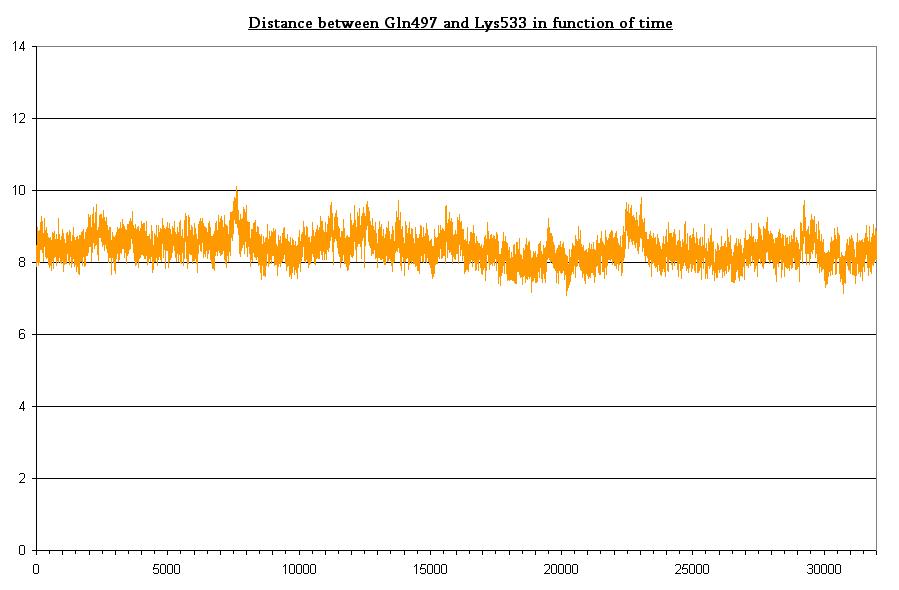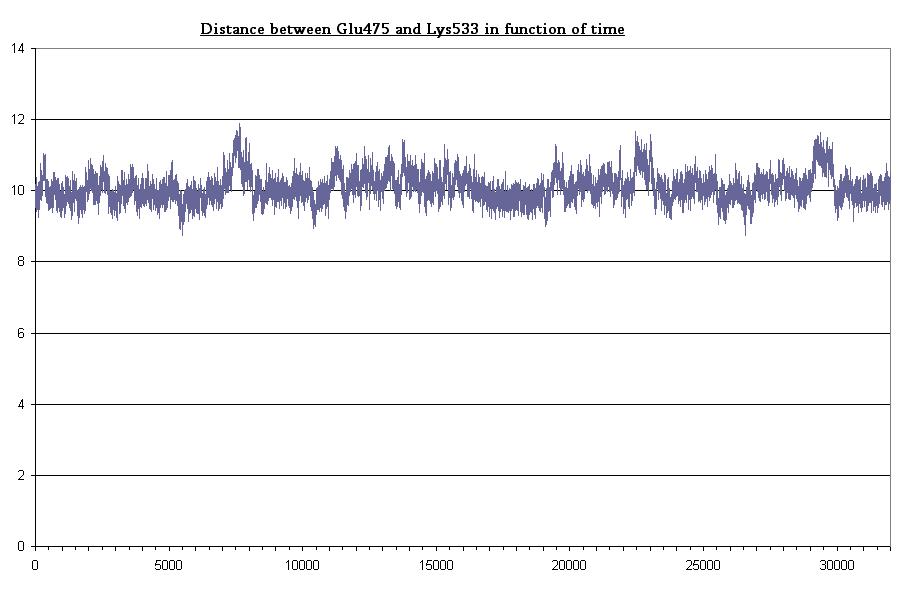Team:EPF-Lausanne/Results
From 2009.igem.org
(→Some useful distances) |
|||
| Line 105: | Line 105: | ||
<br><br> | <br><br> | ||
This is a 1 nanosecond NPT run at 300°K. We hope to see a RMSF curve identical to the beta factor. It should only be shifted higher because of the increased temperature. But having a similar tendency would mean our simulation show oscillations similar to what was observed during crystallography. This is really a quite nice validation of our run! | This is a 1 nanosecond NPT run at 300°K. We hope to see a RMSF curve identical to the beta factor. It should only be shifted higher because of the increased temperature. But having a similar tendency would mean our simulation show oscillations similar to what was observed during crystallography. This is really a quite nice validation of our run! | ||
| + | |||
| + | =Fusion of LOV domain TrpR DNA-binding domain= | ||
| + | We tried to fuse the 2 domains of interest in VMD to visualize the different proteins tried by Sosnick. | ||
| + | The working protein, that we call LOVTap is the result of the fusion at PHE22. | ||
| + | [[Image:Lovtap.png]] | ||
| + | |||
=Differential analysis= | =Differential analysis= | ||
Revision as of 14:15, 14 October 2009
Contents |
Equilibration of light and dark state
Here is our first movie from the modeling, showing the behavior of the protein in the dark state condition: Dark State
Dark state
After having modified some parameters in the parameter files, here is our second movie, concerning the light state of the protein this time, with the FMN: Light State
Light state
Analysis
- Maxwell-Boltzmann Energy Distribution
We obtain the following histogramm!
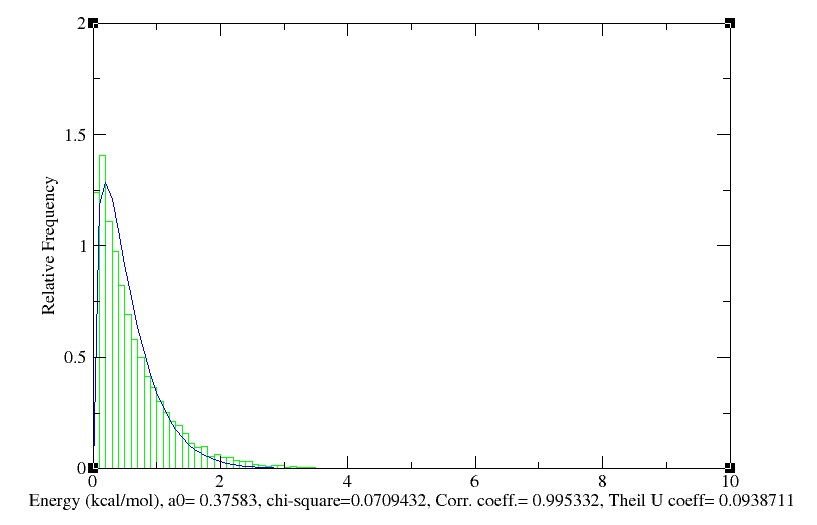
- Temperature
Using EXCEL, we obtain the following graph, which represents the evolution of the temperature in function of time:
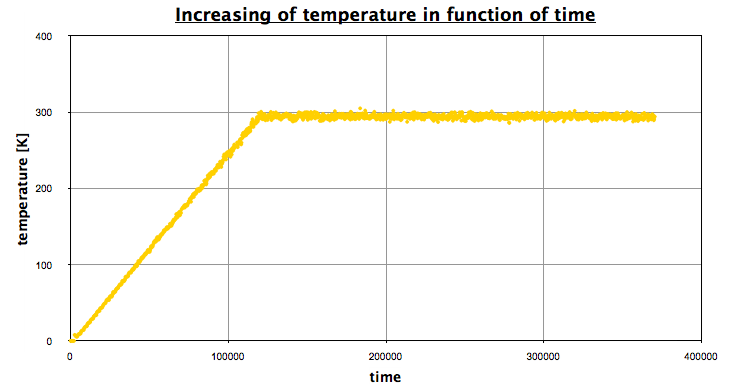
The first part corresponds the the heating, then we let the system reach an equilibrium (NPT state), a NVT portion, and finally a NPT portion again.
- Density
Using EXCEL, we obtain the following graph, which represents the evolution of the density in function of time:
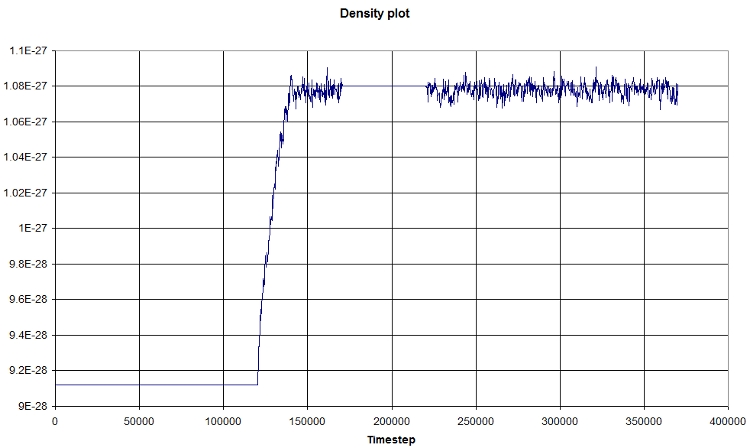
The first part corresponds the the heating, then we let the system reach an equilibrium (NPT state), a NVT portion, and finally a NPT portion again.
- Pressure
Here is a small plot of pressure and temperature in function of time
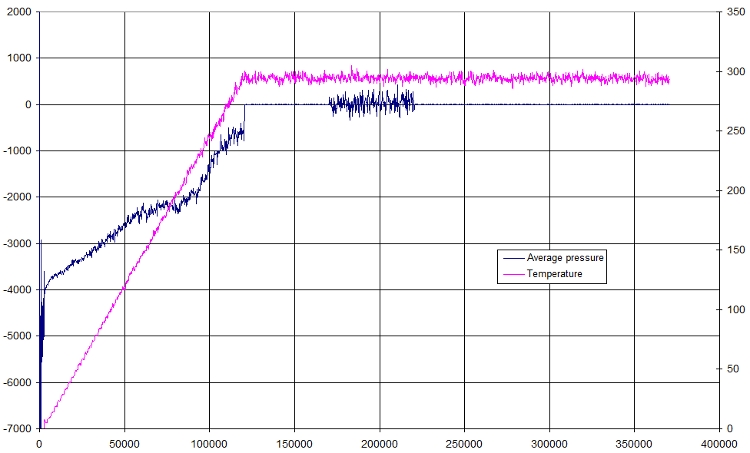
- RMSD
We obtain the following picture:
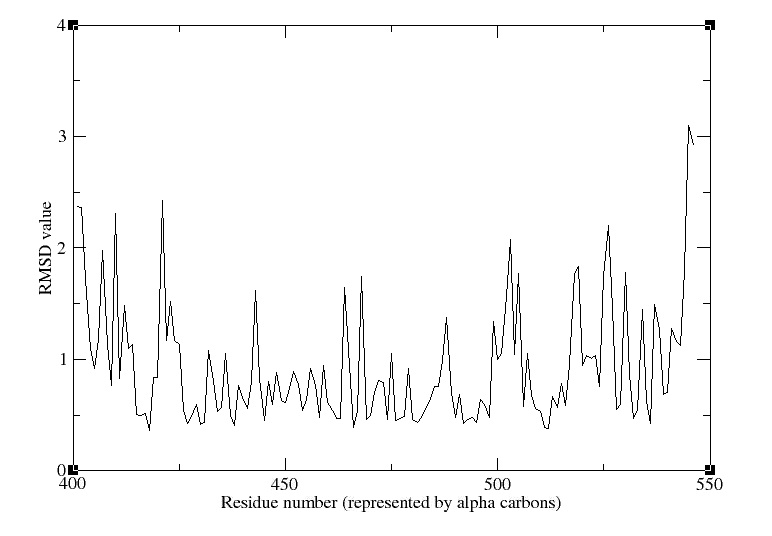
RMSD of residue within 3 angström of the FMN
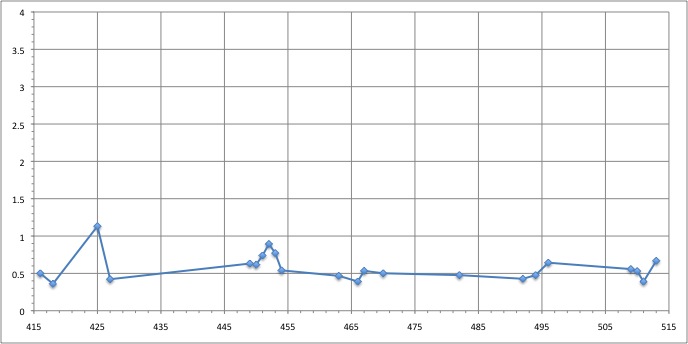
We can see that the residues that move the most are the residue number: 425, 451, 453
RMSD of residue within 6 angström of the FMN
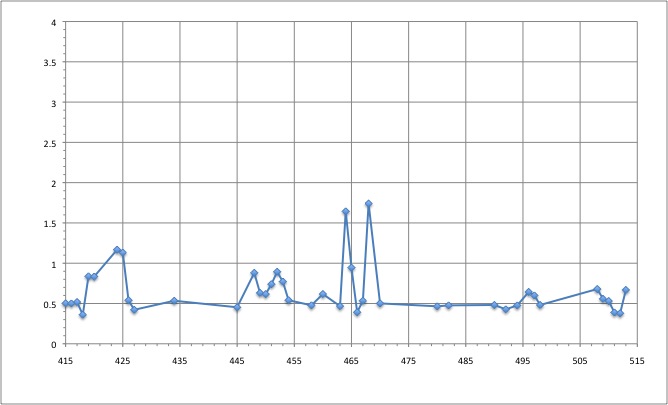
We can see that the residues that move the most are the residue number: 424, 425, 464, 468
- RMSD of selected atoms compared to initial position along time
Here is a fast graph of the output of the average RMSD of the atoms in function of time. It seems normal.
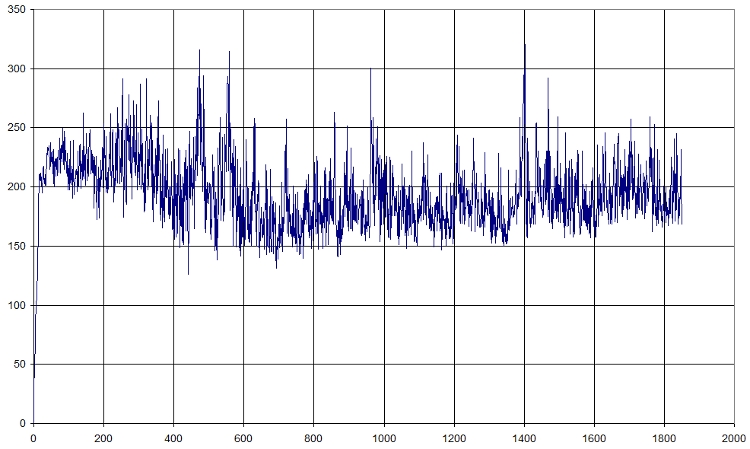
Here is what we got with FIRST_FRAME=1115 REFERENCE_FRAME=1115. Average=921.477, standard deviation=202.1708
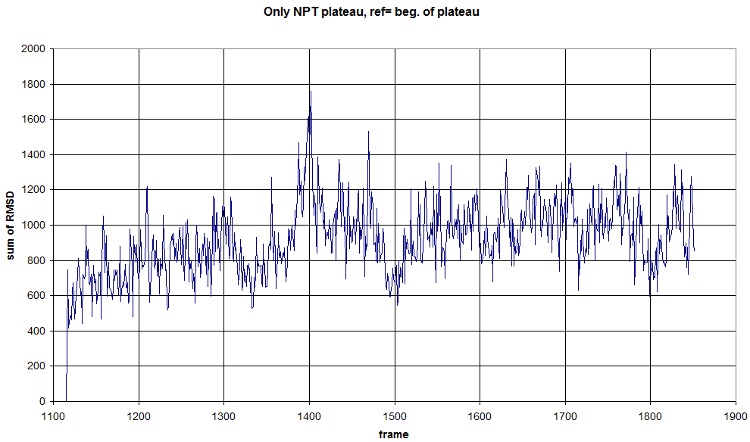
FIRST_FRAME=0 REFERENCE_FRAME=0. The difference of the sum probably comes from the new selection of atoms from the backbone. We should compute an average value to normalize amplitude. (fluctuation is conserved, anyway) Average=781.3913, standard deviation=118.1393
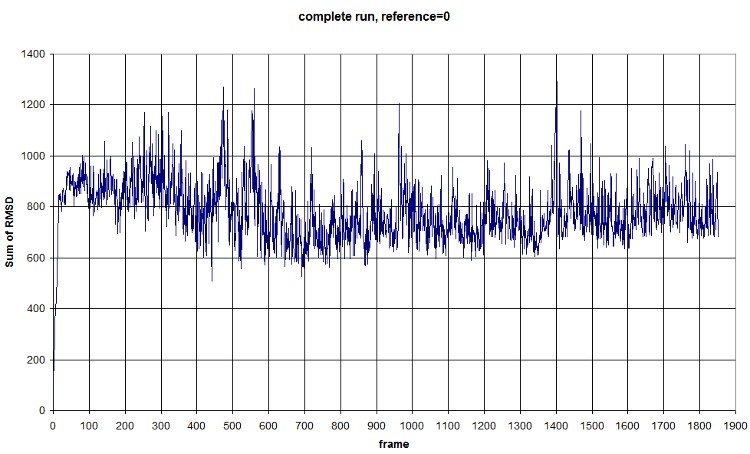
- Salt bridges
Here is a plot for one of the bridges. We have to look for the max distance for a salt bridge.

- RMSF
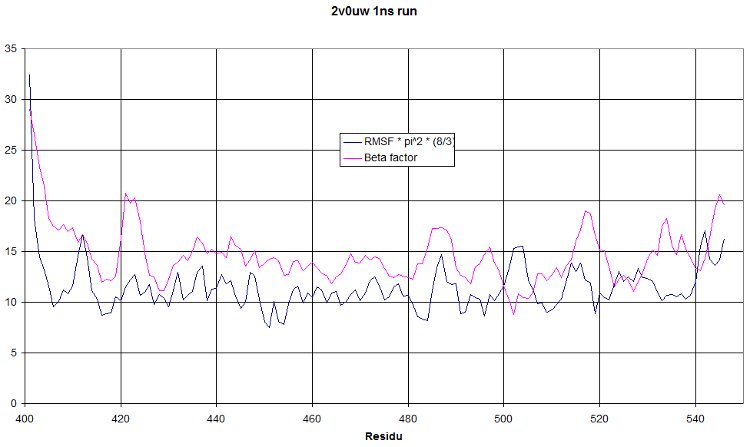
This is a 1 nanosecond NPT run at 300°K. We hope to see a RMSF curve identical to the beta factor. It should only be shifted higher because of the increased temperature. But having a similar tendency would mean our simulation show oscillations similar to what was observed during crystallography. This is really a quite nice validation of our run!
Fusion of LOV domain TrpR DNA-binding domain
We tried to fuse the 2 domains of interest in VMD to visualize the different proteins tried by Sosnick.
The working protein, that we call LOVTap is the result of the fusion at PHE22.
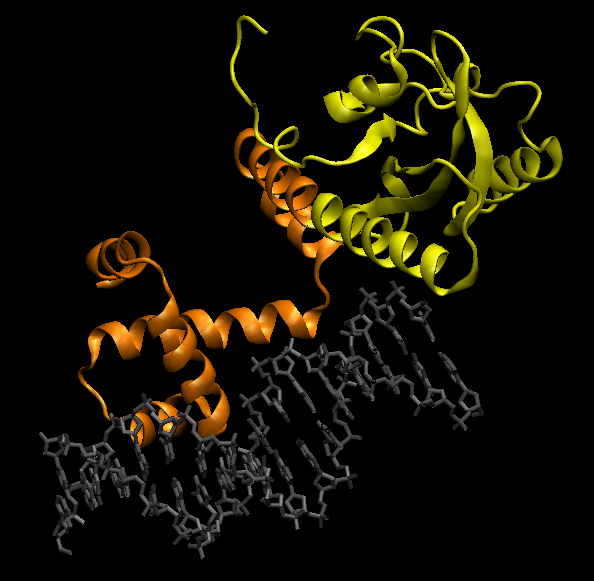
Differential analysis
Some useful distances
- Bond between Gln497 and Lys533 in dark state
- Bond between Gln475 and Lys533 in dark state
 "
"

